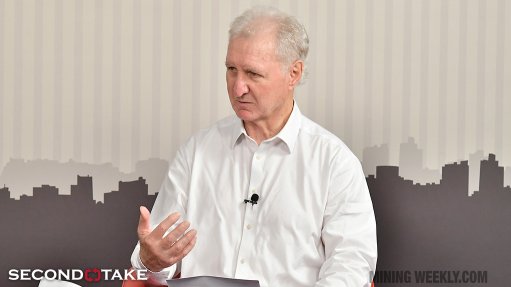New technologies promise to improve air traffic management
Air traffic control/air traffic management (ATC/ATM) agencies need to embrace new technologies in order to further improve air safety. This was stressed by Civil Air Navigation Services Organisation (Canso) director-general Jeff Poole at the recent Canso Global ATM Safety Conference 2017 in Sydney, Australia. (Canso is the global representative body for the ATM sector; Canso members support more than 85% of global air traffic.)
“Safety is our number one priority and we are rightly proud of the safety record in air traffic management,” highlighted Poole. “However, we must ensure that we do not become over-averse to risk and develop a mindset that only sees potential safety problems with every new technological advance. Conversely, we need to be proactively seeking out any and all new advances that have the potential to improve safety as well as efficiency.”
New technologies that are already affecting both aviation and ATM include increased automation, remote and digitised air traffic control towers, as well as space-based surveillance and tracking. ATM providers must both bring these new technologies safely into use and ensure that they further increase air safety.
“While we, rightly, spend a lot of time making sure we are safe today, we also need to ensure that we anticipate safety for tomorrow,” he affirmed. “The technologies which are entering the ATM world are an opportunity to improve safety and increase operational efficiency. Canso associate members, the organisations that provide products, solutions and services for the ATM industry, have an important role to play in this. They are already driving new solutions across Canso workgroups in both safety and operations. Their expertise and innovation, combined with the knowledge and expertise of Canso full members, the organisations that provide air navigation services, are creating a powerful force for transforming ATM performance globally.”
One of the new technologies is Automatic Dependent Surveillance-Broadcast, better known as ADS-B. This technology uses satellites to allow the tracking of aircraft over oceans and remote areas where there is no, nor can be any, ground-based tracking infrastructure.
Remote and digital control towers also increase safety. With improved imaging, including infrared, they provide better observation in low visibility conditions. They decrease the workload of the air traffic controllers and simplify matters by displaying all relevant information (including flight information and weather) on a single screen. Decreasing the ATC workload increases safety.
Automation relieves air traffic controllers of routine, but important, tasks such as “conformance monitoring” – that is, making sure an aircraft is doing what it has been authorised to do. It will allow real time and predictive decision-making by ATC. It will also permit the reduction in the minimum safety distances between aircraft landing and taking off (‘safety minima’ in ATM terminology), while actually improving safety and monitoring capability.
“There has never been a more exciting time to be in aviation and ATM,” asserted Poole. “But, as the aviation industry makes the leap to the latest generation of new technology, it also needs to be aware of the growing cyberthreat to its systems, which have the potential to compromise safety if robust mechanisms are not put in place. The cyberthreat is exacerbated by the preponderance of old technology is use in developing regions such as Africa, which represents a significant challenge in terms of cybersecurity. To help tackle this cyberproblem in air traffic management, Canso has not only produced some excellent guidance material but is also working closely with the International Civil Aviation Organisation and industry partners on a closed network, inaccessible to the public, for aviation data and systemwide information management.”
Article Enquiry
Email Article
Save Article
Feedback
To advertise email advertising@creamermedia.co.za or click here
Press Office
Announcements
What's On
Subscribe to improve your user experience...
Option 1 (equivalent of R125 a month):
Receive a weekly copy of Creamer Media's Engineering News & Mining Weekly magazine
(print copy for those in South Africa and e-magazine for those outside of South Africa)
Receive daily email newsletters
Access to full search results
Access archive of magazine back copies
Access to Projects in Progress
Access to ONE Research Report of your choice in PDF format
Option 2 (equivalent of R375 a month):
All benefits from Option 1
PLUS
Access to Creamer Media's Research Channel Africa for ALL Research Reports, in PDF format, on various industrial and mining sectors
including Electricity; Water; Energy Transition; Hydrogen; Roads, Rail and Ports; Coal; Gold; Platinum; Battery Metals; etc.
Already a subscriber?
Forgotten your password?
Receive weekly copy of Creamer Media's Engineering News & Mining Weekly magazine (print copy for those in South Africa and e-magazine for those outside of South Africa)
➕
Recieve daily email newsletters
➕
Access to full search results
➕
Access archive of magazine back copies
➕
Access to Projects in Progress
➕
Access to ONE Research Report of your choice in PDF format
RESEARCH CHANNEL AFRICA
R4500 (equivalent of R375 a month)
SUBSCRIBEAll benefits from Option 1
➕
Access to Creamer Media's Research Channel Africa for ALL Research Reports on various industrial and mining sectors, in PDF format, including on:
Electricity
➕
Water
➕
Energy Transition
➕
Hydrogen
➕
Roads, Rail and Ports
➕
Coal
➕
Gold
➕
Platinum
➕
Battery Metals
➕
etc.
Receive all benefits from Option 1 or Option 2 delivered to numerous people at your company
➕
Multiple User names and Passwords for simultaneous log-ins
➕
Intranet integration access to all in your organisation


















